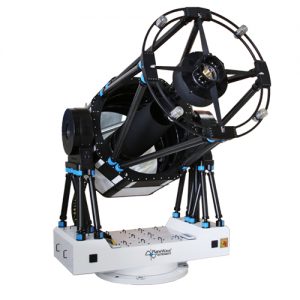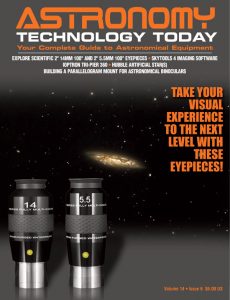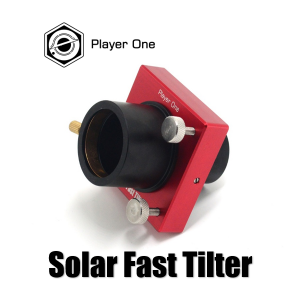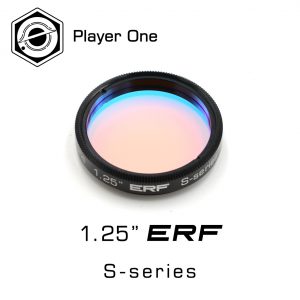At first blush, the PlaneWave PW1000 may appear simply a scaled-up version of Planewave’s PW-700, but as the side-by-side comparison in Image 3 instantly reveals, the challenges associated with that increase in aperture are substantial.
 The PlaneWave PW1000 is a complete one-meter observatory-class telescope featuring a direct-drive altitude-azimuth (Alt-Az) mounting system designed and engineered by PlaneWave. With a diffraction-limited 100-mm image circle, the PW1000 is designed to excel at imaging on the largest format CCD cameras available today.
The PlaneWave PW1000 is a complete one-meter observatory-class telescope featuring a direct-drive altitude-azimuth (Alt-Az) mounting system designed and engineered by PlaneWave. With a diffraction-limited 100-mm image circle, the PW1000 is designed to excel at imaging on the largest format CCD cameras available today.
Light-weighted optics are made of zero expansion fused silica materials for excellent thermal stability and maximum throughput. The dual Nasmyth ports allow two instruments to be installed simultaneously, and a computer-controlled M3 mirror allows either instrument to be remotely selected in seconds. With direct-drive motors, high-resolution encoders, zero backlash and no periodic error, the PW1000 is designed to set a new standard in 1-meter class observatory telescopes.
Why Alt-Az
Alt-Az mounts are the choice for most modern professional observatories. An Alt-Az mount is inherently more stable than an equatorial mount, since there is no cantilevered mass, nor are there any large protruding counterweights to create a dangerous hazard in a public observatory.
An Alt-Az telescope is also considerably more compact than its equatorial counterpart, allowing a larger telescope to fit in a smaller enclosure. The mass required to make a rigid Alt-Az mount is substantially less, leading to substantial cost savings. Unlike German Equatorial mounts, there are no meridian flips to deal with; you can image continuously from horizon to horizon if desired. With no polar alignment required, the Alt-Az mount is far more intuitive to use than a German Equatorial mount.
Fused Silica, Lightweight Optics

The fused silica, from which the lightweight optics of the PW1000 (Image 4) are crafted, has a coefficient of thermal expansion six times lower than Borosilicate (Pyrex) glass, which means that as it cools down, fused silica preserves its shape to a high degree of accuracy. This translates into consistent optical performance and unchanging focus over temperature changes.
Dual Nasmyth Focus Ports
The PlaneWave PW1000 also features dual Nasmyth focus ports (Image 5). The Nasmyth focus is along the altitude axis, so the telescope does not need to be re-balanced when changing equipment. Eyepieces remain at a constant height, greatly simplifying access to the telescope for public observatories. The computer-controlled M3 mirror allows either Nasmyth port to be selected in just a few seconds, allowing observers to easily transition between imaging and visual use, or other instrumentation. The PW1000 includes an integrated rotator for the tertiary mirror, with magnetic locks to position the mirror precisely at either Nasmyth focus position. The rotator can move from one

port to the other in under 10 seconds.
Direct-Drive Motors and On-Axis Encoders
Direct-drive motors and absolute on-axis encoders (Image 6) eliminate the need for reduction gears, thereby eliminating backlash and periodic error. With high-resolution encoders providing the feedback for the direct-drive motors, not only will the telescope track without periodic error and backlash, the mount will also counter wind gusts with precise servo feedback. The direct-drive motors can move the telescope at incredible speeds for tracking satellites or just to minimize target acquisition time.

Automated, Integrated Primary-Mirror Shutter
The design includes an automated primary-mirror shutter that protects the primary mirror from unwanted dust and moisture with this integrated four-shutter automated system, fully controllable with PlaneWave’s PWI software.
Proven Technology
The PW1000 uses the same proven technology as the CDK700. Many CDK700s are deployed around the world at various institutions, such as Caltech, Harvard, Penn State, University of New South Wales, Simon Frasier
University, University of Montana and University of Hamburg, and many more.
Proven Optical Design
The CDK (Corrected Dall-Kirkham) Optical Design is an innovative solution for unsurpassed scientific investigation, visual observing and astro-imaging at an affordable price. It has excellent performance with large-format CCD cameras, far exceeding the off-axis performance of most commercial telescope designs, including the uncorrected Ritchey-Chrétien.
PlaneWave’s design produces a flat, coma-free and astigmatic-free field of view. Since the secondary mirror is spherical, centering is very forgiving, making it easy to align the telescope optics for optimum performance. The end result at the image plane is no off-axis coma, no off-axis astigmatism, and a perfectly flat field to the edge of a 100-mm image circle. Your stars will be pinpoints from the center to the corner of the field of view.
The PlaneWave PW1000 one-meter observatory system is priced at $500,000US.
###
 And to make it easier for you to get the most extensive telescope and amateur astronomy related news, articles and reviews that are only available in the magazine pages of Astronomy Technology Today, we are offering a 1 year subscription for only $6! Or, for an even better deal, we are offering 2 years for only $9. Click here to get these deals which only will be available for a very limited time. You can also check out a free sample issue here.
And to make it easier for you to get the most extensive telescope and amateur astronomy related news, articles and reviews that are only available in the magazine pages of Astronomy Technology Today, we are offering a 1 year subscription for only $6! Or, for an even better deal, we are offering 2 years for only $9. Click here to get these deals which only will be available for a very limited time. You can also check out a free sample issue here.



